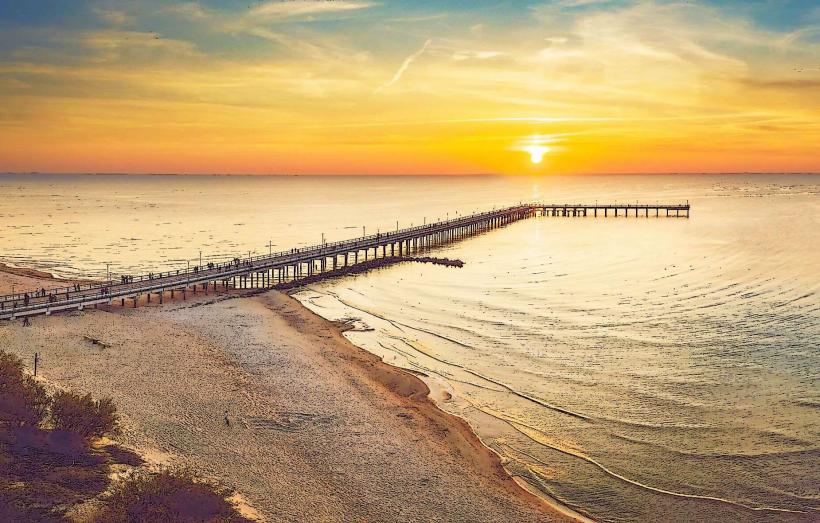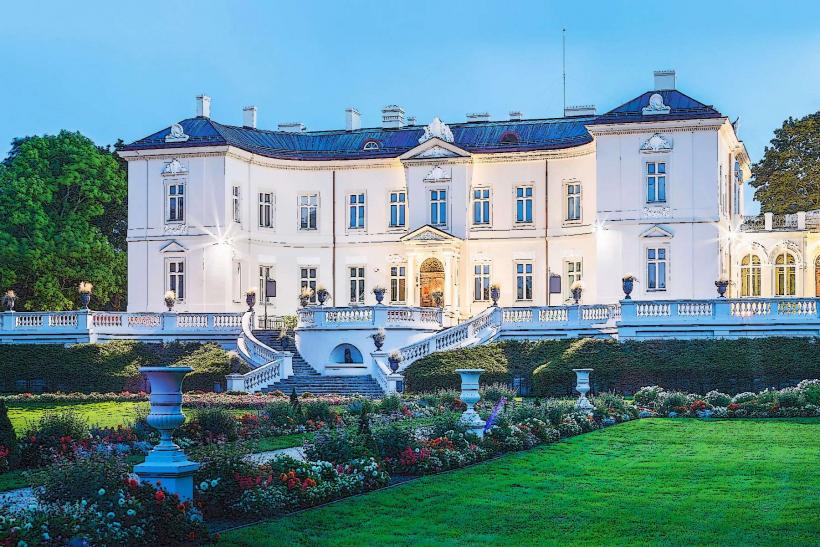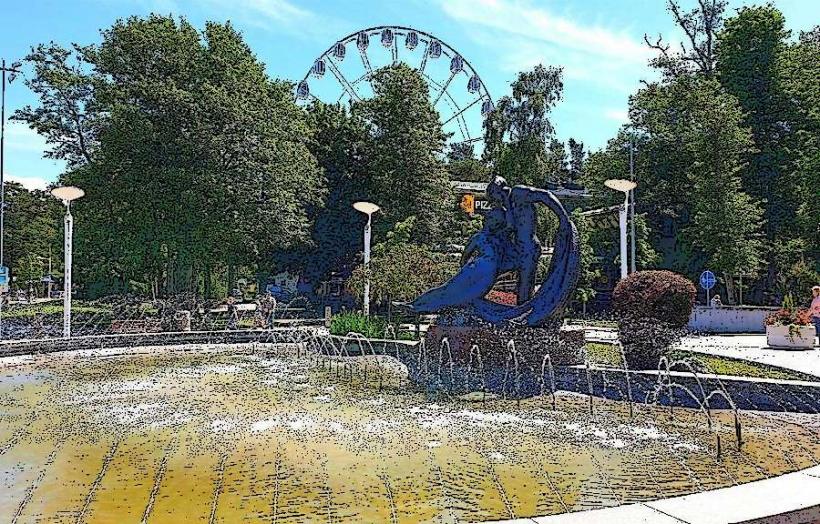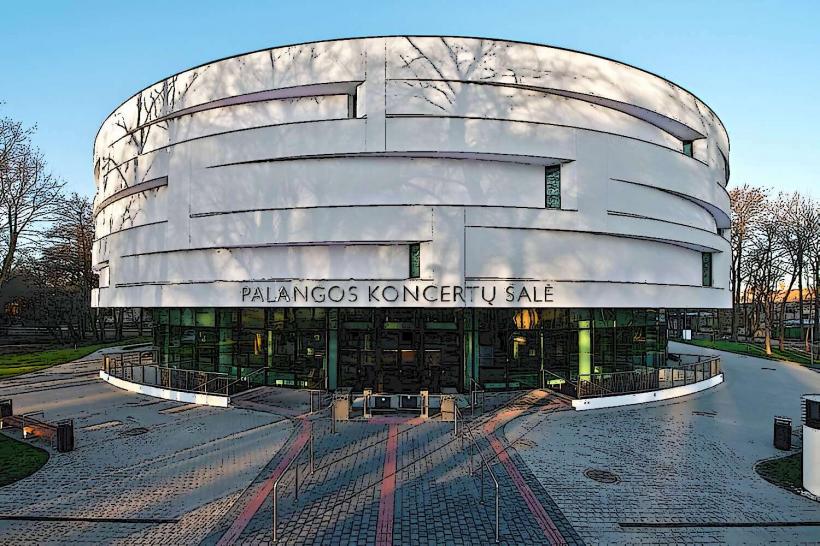Information
Landmark: Palanga Church of AssumptionCity: Palanga
Country: Lithuania
Continent: Europe
The Palanga Church of the Assumption of the Blessed Virgin Mary (Palangos Švč. Mergelės Marijos Ėmimo į Dangų bažnyčia) is one of the most prominent landmarks in Palanga, Lithuania. Situated on Vytauto Street, near the town center, this Roman Catholic church is not only a place of worship but also an architectural and historical gem that attracts both pilgrims and tourists.
History and Background
The Church of the Assumption was built between 1903 and 1907, during the period when Palanga was emerging as a popular resort town for both locals and tourists. The church's construction was largely funded by Tomas Tiskevičius, a wealthy Lithuanian nobleman from the Tiskevičiai family, who was also responsible for the development of many important buildings in Palanga, including the Palanga Amber Museum. His vision was to provide a place of spiritual solace for the growing population of Palanga, especially the many visitors who came to the seaside town.
The church was designed by the German architect Franz Schwechten, and it was consecrated on August 15, 1907, which coincides with the Feast of the Assumption of the Blessed Virgin Mary, the church's patron saint. The dedication of the church to the Assumption is significant in the Catholic tradition, as it honors the belief that the Virgin Mary was assumed into heaven at the end of her earthly life.
Architecture and Design
The Palanga Church of the Assumption is an example of neo-Gothic architecture, a style that was popular in the late 19th and early 20th centuries. The church stands out for its elegance and its blend of Gothic elements with traditional Lithuanian influences.
Facade: The church’s facade is marked by its tall, pointed arches and large windows. The central part of the building features a prominent entrance flanked by two towers, which are topped with spires, adding to the church’s vertical and imposing aesthetic. The architecture is designed to evoke a sense of grandeur and reverence, with the use of stone and brick giving it both a traditional and durable appearance.
Interior: The interior of the church is equally impressive, with soaring ceilings and intricate stained glass windows depicting biblical scenes and religious icons. The stained glass windows, which were imported from Germany, feature vibrant colors and are an important aspect of the church’s artistic heritage. The high altar is adorned with elaborate wood carvings and sculptures, contributing to the church's serene and sacred atmosphere.
Tower: One of the most striking features of the church is its twin towers, which stand tall above the church’s main building. The towers are visible from various parts of Palanga and are a key part of the town’s skyline. The tallest of the two towers is over 70 meters in height, making it one of the tallest churches in Lithuania.
Bells: The church also has a set of bells, which were brought from the famous Lviv Bell Foundry in Ukraine. The ringing of the bells can be heard throughout Palanga, adding to the spiritual and cultural ambiance of the town.
Role and Function
The Palanga Church of the Assumption serves as the central place of Catholic worship for both locals and tourists. It holds regular masses and religious ceremonies, including weddings, baptisms, and other liturgical services. Given its location in the popular tourist destination of Palanga, the church also attracts many visitors, particularly during the summer months when the town is bustling with tourists.
The church is not only a place for worship but also a center for spiritual reflection and community gathering. The building's peaceful atmosphere and serene setting make it a favored destination for those seeking solace or wanting to admire its architectural beauty.
Cultural and Historical Significance
Beyond its religious role, the Church of the Assumption has become an important part of Palanga’s cultural heritage. It reflects the town’s history and development, particularly in the early 20th century, when Palanga was gaining popularity as a resort town. The Tiskevičiai family’s involvement in the church’s construction also reflects the significant influence they had on the town’s development during that period.
Over the years, the church has undergone several renovations and restorations, especially to preserve its historical features and to accommodate the growing needs of the local community and visitors. Despite these changes, the church has maintained its original architectural charm and remains a symbol of Palanga's spiritual and cultural life.
Visitor Experience
For visitors, the Palanga Church of the Assumption offers an opportunity to experience both the spiritual and cultural side of Palanga. The church is a popular stop for tourists who are interested in the town’s architectural heritage or who simply want to attend mass or a special religious event.
Mass Services: Visitors are welcome to attend regular mass services, which are held in Lithuanian and sometimes include music, particularly during special feasts like the Assumption (August 15). The church is known for its musical events, especially organ concerts, which take place in the summer months.
Cultural Events: The church occasionally hosts cultural and religious events, such as choir performances, special masses, and art exhibitions. These events are often tied to important Lithuanian religious holidays or festivals, making the church a lively cultural hub during certain times of the year.
Peaceful Atmosphere: Even for those who are not religious, the church offers a quiet place for reflection and peaceful contemplation. Its location in the heart of Palanga, with its beautiful surroundings and tranquil ambiance, provides visitors with a calm break from the bustling town center.
Conclusion
The Palanga Church of the Assumption of the Blessed Virgin Mary is an architectural and spiritual landmark in Palanga, offering visitors both a sense of peace and a glimpse into the town’s rich history. Its stunning neo-Gothic design, impressive towers, and beautiful interior make it a key part of Palanga’s cultural landscape. Whether you are attending a religious service, admiring the architecture, or seeking a moment of quiet reflection, this church is an essential stop for anyone visiting Palanga.








